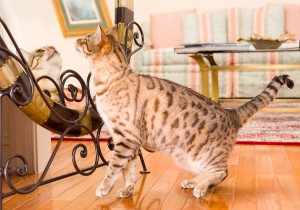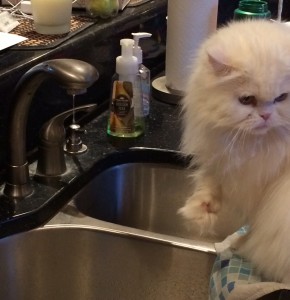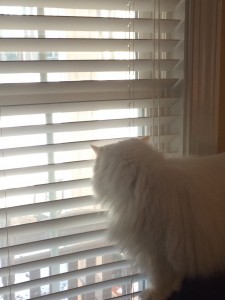How do I tell if the cat coming toward me is a Friend or Foe? Even us kitties use our gut feeling (instincts) when greeting a new cat. Sure, I could state the obvious: if their claws are out, back arched and fur standing on end – probably Foe. Yet this is also the pose a scared young cat will make to bluff that it is bigger and fiercer (when actually she is quivering and ready to bolt)
One thing to keep in mind: most of the time the Foe is a male trying to stake out new territory or a female cat. So when a new cats stray into my neighborhood, it’s usually a Foe. When a sweet house kitty gets out for a few hours, primarily a Friend. When I encounter these cats, there are only a few moments to decide which one they are. To do this, I use my method of identifying potential threats, called: Slider’s Superior Skills System or “SSSS” and I make that sound when practicing
Step 1: Control the First Impression
Make sure to Fluff your fur to MAXIMUM. For the best angle, turn your body sideways but keep your head facing forward. Start flicking your tail back and forth like a whip. Stare-them down.
Step 2: Verbalize
Choose between growling and hissing to verbalize your intention. If they reply in the same tone, the fight is on If the foe seems particularly tough, an all-out caterwaul is in order “Mrreeooowwwaahh ”
Step 3: Action
Circle each other, striking out with a fully-claw-extended paw. Go for the neck, grabbing ahold to land a solid bite on the back. Finally, kick like crazy at the torso, hoping to drive home the idea “I need to get out of here.”
Of course there can be positive interactions as well – like with my friend Frosty. She is a silver tabby that sits on my front porch, patiently waiting for me to get let outside. We take turns rubbing against the railing beams, marking our scent. Then we roll on the pine-straw, laying side-by-side in the sun. She likes to lean over and lick my ears, cleaning out the dirt and smoothing down my fly-aways. That is a true friend!
























